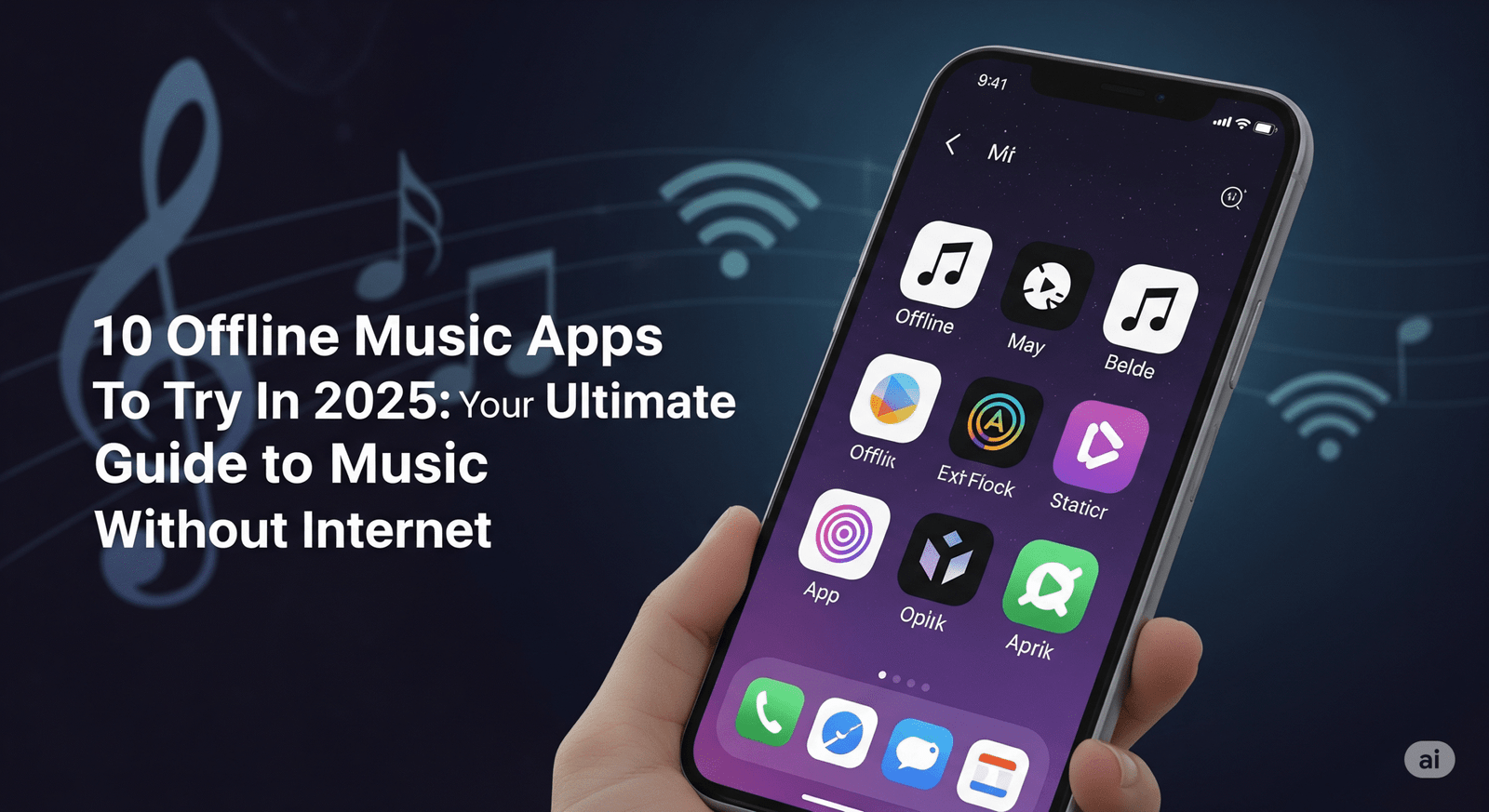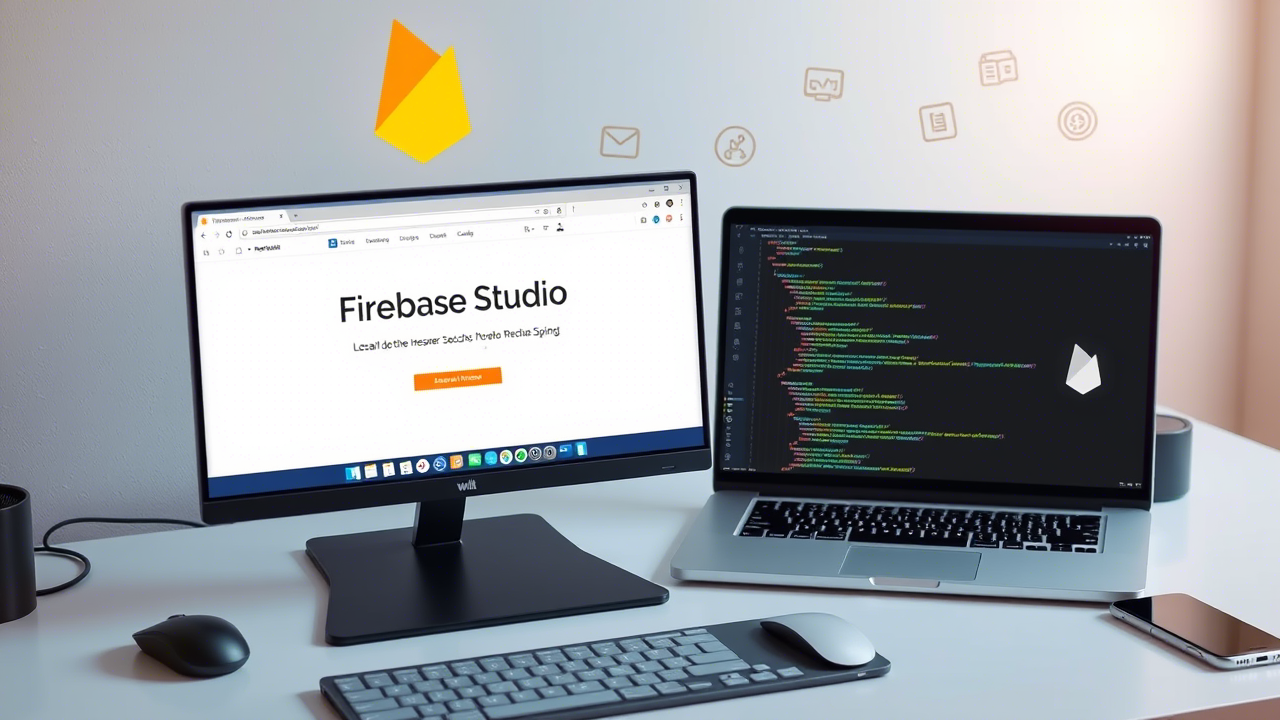10 Offline Music Apps To Try in 2025: Your Ultimate Guide to Music Without Internet
Music streaming has become an integral part of our daily lives, but what happens when you’re stuck without internet connection? The answer lies in offline music apps – applications that allow you to enjoy your favorite tunes without requiring Wi-Fi or cellular data. These innovative offline music apps have revolutionized how we consume music, offering uninterrupted listening experiences whether you’re on a plane, in remote areas, or simply trying to conserve your data plan.
The growing popularity of offline music apps isn’t just a coincidence. According to recent industry reports, 46% of total music streaming revenue comes from paid services, with offline functionality being one of the most requested features. This demand stems from the practical benefits these apps provide: uninterrupted streaming during travel, reduced battery consumption, and elimination of buffering issues caused by poor network connectivity.
In this comprehensive guide, I’ll walk you through the 10 best offline music apps available in 2025, helping you discover the perfect solution for your music needs.
Table of Contents
Why Choose Offline Music Apps?

Before diving into our list of the best offline music apps, let’s understand why these applications have become essential for music lovers worldwide:
Uninterrupted Music Experience: Whether you’re traveling through areas with poor network coverage, working out at the gym, or taking long flights, offline music apps ensure your playlist never stops.
Battery Life Optimization: Streaming music offline consumes approximately 50% less battery compared to online streaming, making it perfect for extended listening sessions.
Data Conservation: With mobile data costs still significant in many regions, offline streaming helps you enjoy unlimited music without worrying about data overages.
Superior Audio Quality: Many offline music apps store music in high-quality formats, eliminating the compression and quality degradation often associated with live streaming.
Top 10 Offline Music Apps for 2025
1. SoundCloud
SoundCloud stands out as one of the most versatile offline music apps available today. What makes this platform unique is its massive community of independent creators and its user-friendly approach to offline listening.
Key Features:
- Access to millions of original tracks, remixes, and covers
- Automatic offline caching based on listening history
- Global community of creators and artists
- Ad-supported free version with offline capabilities
Pricing: Free with ads, Premium starts at $5.99/month
The beauty of SoundCloud lies in its intelligent caching system. Unlike other offline music apps that require manual downloads, SoundCloud automatically processes your listening history and makes previously streamed content available offline. This seamless approach makes it perfect for users who want offline access without the hassle of planning ahead.
Download: Android | iOS
2. Spotify
Spotify remains the gold standard among offline music apps, offering an extensive catalog of over 100 million songs and podcasts. Its offline functionality is particularly impressive, allowing users to download up to 10,000 songs per device across five different devices.
Key Features:
- Massive music library with exclusive content
- Download up to 10,000 songs per device
- Personalized playlists and recommendations
- Cross-platform synchronization
Pricing: Free with ads, Premium starts at $9.99/month
Spotify’s offline feature is incredibly user-friendly. Simply toggle the download button next to any playlist, album, or individual track, and watch as the icon turns green to indicate successful offline storage. The app also offers Smart Downloads, which automatically downloads new music based on your preferences.
Download: Android | iOS
3. Trebel
Trebel takes a unique approach among offline music apps by offering completely free offline music streaming. The platform operates on the philosophy that everyone deserves access to premium music without paying subscription fees.
Key Features:
- Completely free offline music streaming
- On-demand music access
- Personalized recommendations
- Ad-supported revenue model
Pricing: Completely free
With over 3.5 million monthly active users, Trebel has proven that the ad-supported model can work effectively for offline music apps. The platform uses advanced algorithms to provide personalized recommendations while displaying relevant advertisements from popular brands.
Download: Android | iOS
4. Pandora
Pandora, powered by the Music Genome Project, offers one of the most sophisticated recommendation systems among offline music apps. While primarily available in the United States due to licensing restrictions, it provides an exceptional personalized listening experience.
Key Features:
- Advanced music recommendation algorithm
- Multiple subscription tiers
- Podcast integration
- Gaming console compatibility
Pricing: Free with ads, Premium starts at $4.99/month
Pandora’s strength lies in its human-curated music analysis combined with machine learning. The platform offers three main packages: Pandora Plus, Pandora Premium, and Pandora Premium Family, with offline capabilities available in the premium tiers.
Download: Android | iOS
5. Deezer
Deezer stands among the most comprehensive offline music apps, boasting over 90 million tracks and advanced machine learning capabilities for personalized music discovery. The platform is available worldwide and compatible with numerous devices.
Key Features:
- 90 million+ track library
- Machine learning-powered recommendations
- Multi-device compatibility including gaming consoles
- High-quality audio streaming
Pricing: Free with ads, Premium starts at $9.99/month
What sets Deezer apart from other offline music apps is its Flow feature, which creates an endless personalized playlist based on your listening habits. The offline functionality works seamlessly across smartphones, smart home devices, and wearables.
Download: Android | iOS
6. LiveXLive
Formerly known as Slacker Radio, LiveXLive offers more than just music streaming. This platform combines traditional offline music apps functionality with live concert streaming and exclusive festival content.
Key Features:
- Live concert and festival streaming
- Original soundtracks and documentaries
- Multiple subscription tiers
- Contest and event access
Pricing: Plus ($3.99/month) | Premium ($9.99/month)
LiveXLive’s unique selling proposition is its combination of on-demand music with live event streaming. While both subscription tiers offer ad-free listening, only the Premium package provides full offline capabilities.
Download: Android | iOS
7. Tidal
Tidal has established itself as the premium choice among offline music apps, particularly for audiophiles who prioritize sound quality. Owned by artists including Jay-Z, the platform focuses on providing the highest quality audio experience possible.
Key Features:
- Lossless audio quality
- Artist-owned platform
- Exclusive content and music videos
- High-fidelity sound options
Pricing: Standard ($9.99/month) | HiFi ($19.99/month)
Tidal’s commitment to audio quality makes it unique among offline music apps. The platform offers both standard and high-fidelity streaming options, with the latter providing CD-quality sound that audiophiles appreciate. All plans include unlimited offline downloads.
Download: Android | iOS
8. Napster
Napster operates as a premium-only service among offline music apps, focusing on providing an ad-free experience with unlimited downloads from day one. The platform emphasizes social features that allow users to connect with fellow music enthusiasts.
Key Features:
- Premium-only service (no free tier)
- Social music discovery features
- Custom profile creation
- Multi-device compatibility
Pricing: Starting at $9.99/month
While Napster doesn’t offer a free tier like other offline music apps, its premium-only approach ensures consistent quality and features across all users. The platform supports over 15 different device types, making it highly versatile.
Download: Android | iOS
9. Bandcamp
Bandcamp represents a different approach among offline music apps, functioning more as a music marketplace where fans directly support artists. This unique model creates a more intimate connection between artists and listeners.
Key Features:
- Direct artist support model
- Purchase-based offline access
- Independent artist discovery
- Merchandise and event tickets
Pricing: Free app, pay-per-track/album
Unlike subscription-based offline music apps, Bandcamp requires users to purchase music for offline access. However, this model directly supports artists and often provides higher-quality audio files that remain permanently accessible.
Download: Android | iOS
10. Amazon Music
Amazon Music integrates seamlessly with the Amazon ecosystem, offering voice control through Alexa and compatibility with numerous Amazon devices. For Amazon Prime members, it provides excellent value among offline music apps.
Key Features:
- Alexa voice integration
- Amazon Prime integration
- Multi-device compatibility
- Amazon Originals content
Pricing: Free with Prime, Unlimited starts at $7.99/month
Amazon Music’s strength lies in its ecosystem integration. Prime members get access to a substantial music library, while Music Unlimited subscribers enjoy the full offline music apps experience with unlimited downloads and ad-free listening.
Download: Android | iOS
Business Potential of Offline Music Apps
The market for offline music apps continues to show tremendous growth potential. Recent industry data reveals compelling statistics about the business opportunities in this space:
| Metric | Value | Growth |
|---|---|---|
| Paid Music Subscribers (2023) | 550+ million | 12% YoY |
| Global Streaming Revenue | $17.5 billion | 10% YoY |
| Offline Feature Adoption | 78% of premium users | 15% YoY |
These numbers demonstrate why investors and developers are increasingly interested in offline music apps. The monetization strategies vary from subscription models (like Spotify and Tidal) to ad-supported free tiers (like SoundCloud) and direct purchase models (like Bandcamp).
For entrepreneurs looking to enter this market, partnering with experienced development teams becomes crucial. Mobile App Branding is done perfectly by YAAM Web Solutions, ensuring your music app stands out in this competitive landscape.
The Future of Offline Music Streaming

As we progress through 2025, offline music apps are evolving beyond simple download functionality. Several trends are shaping the future of offline music consumption:
AI-Powered Predictions: Modern offline music apps use artificial intelligence to predict your music preferences and automatically download tracks you’re likely to enjoy, ensuring your offline library stays fresh and relevant.
Cross-Platform Synchronization: The best offline music apps now seamlessly sync your offline content across multiple devices, from smartphones to smartwatches to car entertainment systems.
Enhanced Audio Quality: With storage costs decreasing and device capabilities improving, offline music apps are offering higher quality audio formats, including lossless and spatial audio options.
Smart Storage Management: Advanced offline music apps now intelligently manage storage space by analyzing listening patterns and removing rarely-played offline content automatically.
According to MusicWeek’s latest industry report, offline functionality has become the second most requested feature in music streaming apps, right after music discovery algorithms.
Conclusion
The landscape of offline music apps in 2025 offers something for every type of music listener. Whether you’re an audiophile seeking the highest quality audio (Tidal), a budget-conscious user wanting free offline access (Trebel), or someone deeply integrated into a specific ecosystem (Amazon Music), there’s a perfect solution waiting for you.
The key to choosing the right offline music apps lies in understanding your specific needs: audio quality preferences, budget constraints, device compatibility requirements, and music discovery preferences. Each app on this list excels in different areas, and the best choice depends on your individual priorities.
As the music streaming industry continues to evolve, offline functionality remains a crucial feature that separates premium services from basic offerings. The offline music apps featured in this guide represent the current best-in-class solutions, each offering unique approaches to solving the challenge of music consumption without internet connectivity.
For businesses looking to develop their own music streaming solutions, YAAM Web Solutions offers comprehensive music app development services, helping bring innovative offline music apps to market with cutting-edge features and user-centric design.
Founded in 2018, YAAM Web Solutions is a trusted tech company delivering ISO 27001-certified digital solutions and innovative mobile app development services.

Frequently Asked Questions
1. What are the best offline music apps for 2025?
The top offline music apps for 2025 include SoundCloud for free offline access, Spotify for the largest music library, Tidal for audiophile-quality sound, and Trebel for completely free offline streaming. Each offers unique advantages depending on your specific needs and budget.
2. How do offline music apps work?
Offline music apps work by downloading and storing music files locally on your device. When you enable offline mode, the app downloads selected tracks, playlists, or albums to your device’s storage. This allows you to play music without an internet connection, as the app accesses the stored files instead of streaming from servers.
3. Can I legally listen to music offline for free?
Yes, several offline music apps offer free offline listening legally. SoundCloud and Trebel provide free offline access supported by advertisements. Spotify also offers limited offline functionality in their free tier, though with restrictions on the number of downloads and ad interruptions.
4. How do offline music apps generate revenue?
Offline music apps use various monetization strategies including subscription fees (Spotify, Tidal), advertising revenue (SoundCloud, Trebel), direct music sales (Bandcamp), and ecosystem integration (Amazon Music). Most successful apps combine multiple revenue streams to ensure sustainability.
5. What’s the difference between offline and online music streaming?
Offline music apps store music files on your device, eliminating the need for internet connectivity during playback. This results in better battery life, no buffering issues, and consistent audio quality. Online streaming requires continuous internet connection but offers instant access to entire music catalogs without using device storage.







